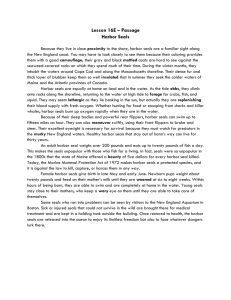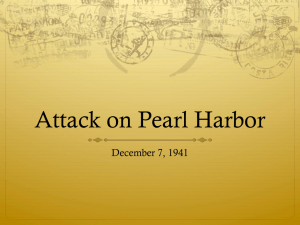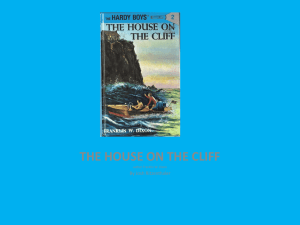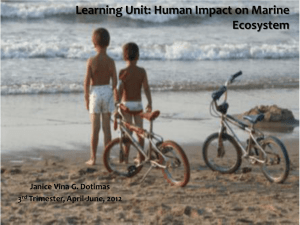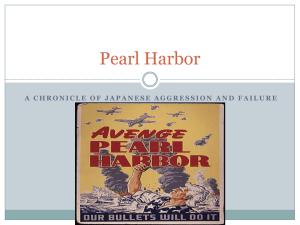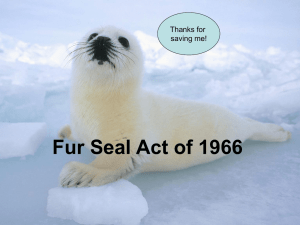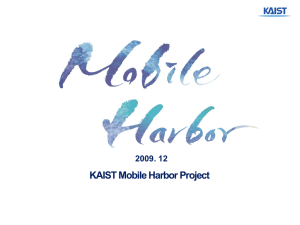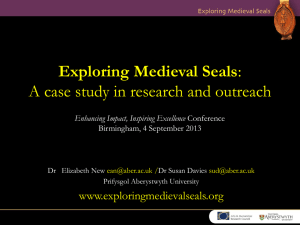File - Pacific Honors Program Study Site!
advertisement
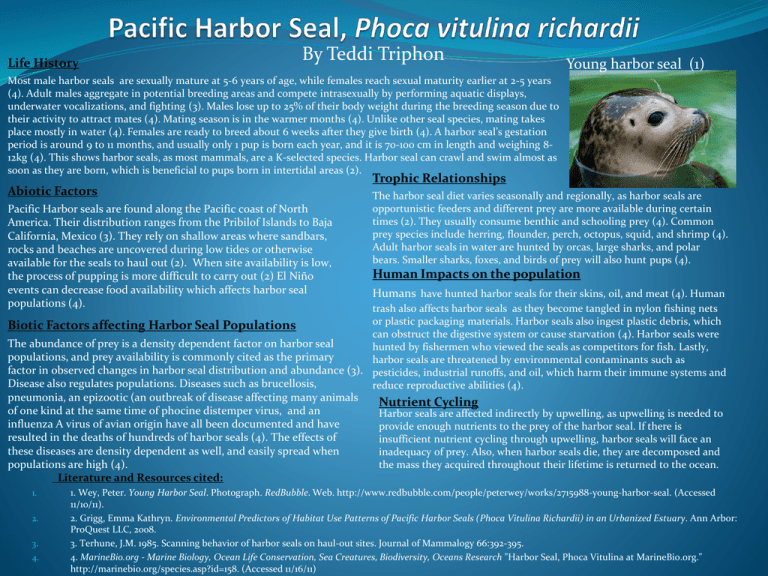
Life History By Teddi Triphon Young harbor seal (1) Most male harbor seals are sexually mature at 5-6 years of age, while females reach sexual maturity earlier at 2-5 years (4). Adult males aggregate in potential breeding areas and compete intrasexually by performing aquatic displays, underwater vocalizations, and fighting (3). Males lose up to 25% of their body weight during the breeding season due to their activity to attract mates (4). Mating season is in the warmer months (4). Unlike other seal species, mating takes place mostly in water (4). Females are ready to breed about 6 weeks after they give birth (4). A harbor seal’s gestation period is around 9 to 11 months, and usually only 1 pup is born each year, and it is 70-100 cm in length and weighing 812kg (4). This shows harbor seals, as most mammals, are a K-selected species. Harbor seal can crawl and swim almost as soon as they are born, which is beneficial to pups born in intertidal areas (2). Abiotic Factors Pacific Harbor seals are found along the Pacific coast of North America. Their distribution ranges from the Pribilof Islands to Baja California, Mexico (3). They rely on shallow areas where sandbars, rocks and beaches are uncovered during low tides or otherwise available for the seals to haul out (2). When site availability is low, the process of pupping is more difficult to carry out (2) El Niño events can decrease food availability which affects harbor seal populations (4). Trophic Relationships The harbor seal diet varies seasonally and regionally, as harbor seals are opportunistic feeders and different prey are more available during certain times (2). They usually consume benthic and schooling prey (4). Common prey species include herring, flounder, perch, octopus, squid, and shrimp (4). Adult harbor seals in water are hunted by orcas, large sharks, and polar bears. Smaller sharks, foxes, and birds of prey will also hunt pups (4). Human Impacts on the population Humans have hunted harbor seals for their skins, oil, and meat (4). Human trash also affects harbor seals as they become tangled in nylon fishing nets or plastic packaging materials. Harbor seals also ingest plastic debris, which Biotic Factors affecting Harbor Seal Populations can obstruct the digestive system or cause starvation (4). Harbor seals were The abundance of prey is a density dependent factor on harbor seal hunted by fishermen who viewed the seals as competitors for fish. Lastly, populations, and prey availability is commonly cited as the primary harbor seals are threatened by environmental contaminants such as factor in observed changes in harbor seal distribution and abundance (3). pesticides, industrial runoffs, and oil, which harm their immune systems and Disease also regulates populations. Diseases such as brucellosis, reduce reproductive abilities (4). pneumonia, an epizootic (an outbreak of disease affecting many animals of one kind at the same time of phocine distemper virus, and an influenza A virus of avian origin have all been documented and have resulted in the deaths of hundreds of harbor seals (4). The effects of these diseases are density dependent as well, and easily spread when populations are high (4). Literature and Resources cited: 1. 2. 3. 4. Nutrient Cycling Harbor seals are affected indirectly by upwelling, as upwelling is needed to provide enough nutrients to the prey of the harbor seal. If there is insufficient nutrient cycling through upwelling, harbor seals will face an inadequacy of prey. Also, when harbor seals die, they are decomposed and the mass they acquired throughout their lifetime is returned to the ocean. 1. Wey, Peter. Young Harbor Seal. Photograph. RedBubble. Web. http://www.redbubble.com/people/peterwey/works/2715988-young-harbor-seal. (Accessed 11/10/11). 2. Grigg, Emma Kathryn. Environmental Predictors of Habitat Use Patterns of Pacific Harbor Seals (Phoca Vitulina Richardii) in an Urbanized Estuary. Ann Arbor: ProQuest LLC, 2008. 3. Terhune, J.M. 1985. Scanning behavior of harbor seals on haul-out sites. Journal of Mammalogy 66:392-395. 4. MarineBio.org - Marine Biology, Ocean Life Conservation, Sea Creatures, Biodiversity, Oceans Research "Harbor Seal, Phoca Vitulina at MarineBio.org." http://marinebio.org/species.asp?id=158. (Accessed 11/16/11)
